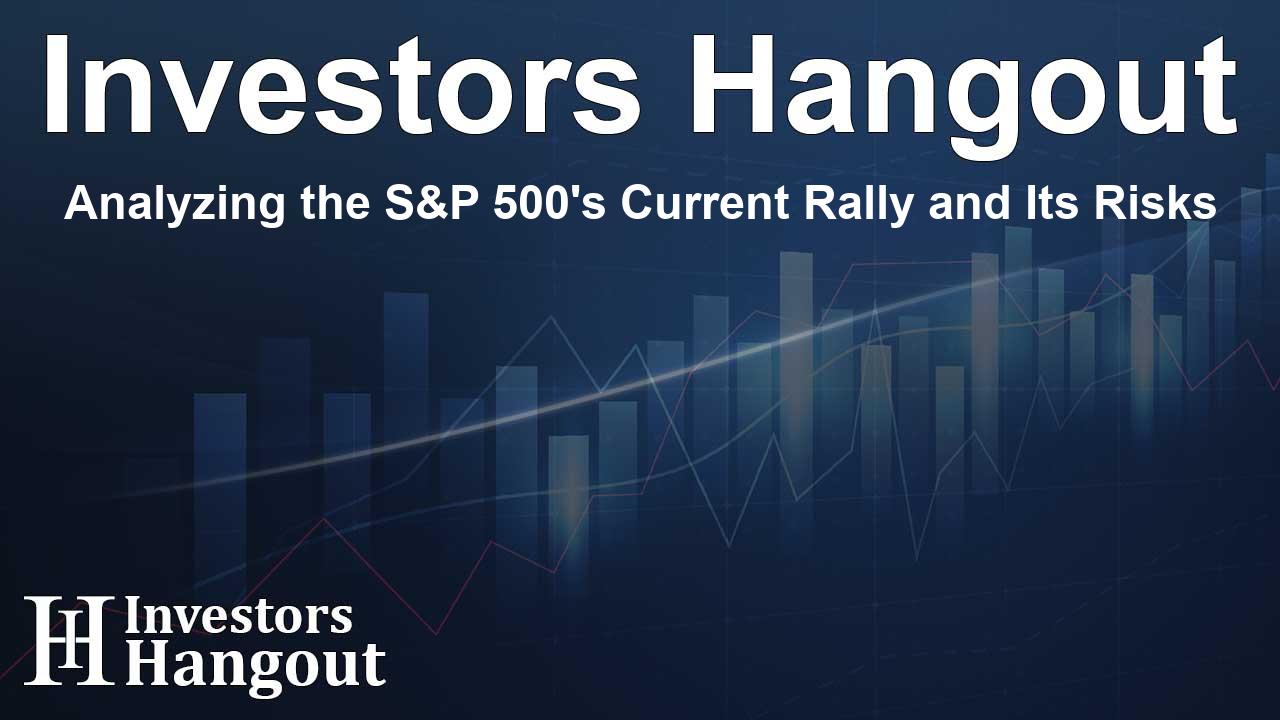Analyzing the S&P 500's Current Rally and Its Risks

Understanding the Current S&P 500 Rally
The S&P 500 is experiencing a remarkable rally this July, a trend that has characterized the month since 2015. However, beneath the surface of this bullish sentiment lies a more complex and potentially troubling scenario for investors.
Signs of Overheating
Recent trading data indicates that the S&P 500 has consistently closed above its upper Bollinger Band for the last several trading sessions. This technical indicator often signals that the index is overheating. The last occurrence of this pattern foreshadowed a notable correction.
Market participants, particularly those tracking the S&P 500 through ETFs such as SPDR S&P 500 ETF Trust (SPY), Vanguard S&P 500 ETF (VOO), and iShares Core S&P 500 ETF (IVV), may need to consider their positions carefully as these trends unfold.
Market Breadth Concerns
A significant point of concern is the narrowing market breadth. Analysis shows a widening gap between the index’s overall strength and that of its represented stocks. This disparity highlights that a handful of mega-cap companies—like NVIDIA Corp (NVDA), Apple Inc (AAPL), and Microsoft Corp (MSFT)—are primarily contributing to the index's performance, while the majority of other stocks are lagging.
This type of concentrated leadership may prop up the index temporarily, but it raises flags about sustainability and increases vulnerability to any weaknesses experienced by those leading stocks.
Seasonal Trends and Potential Pitfalls
Despite these warning signs, the seasonal strength associated with July cannot be overlooked. Historically, the S&P 500 has finished positively during this month, leading bulls to hope that this trend will persist. The momentum, buoyed by excitement around AI technology and potential interest rate cuts, adds to investor confidence.
However, questions loom. Investors must consider if this July rally is strong enough to counterbalance the technical warnings and underlying market deterioration or if it merely represents a win on a crumbling foundation.
Final Thoughts on the S&P 500 Performance
In conclusion, while the current performance indicators of the S&P 500 may appear impressive at a glance, a deeper analysis reveals a divided participation landscape. Many stocks are either missing out or underperforming, suggesting that investors should remain vigilant in navigating the upcoming market conditions.
Frequently Asked Questions
What is the current status of the S&P 500 rally?
The S&P 500 has shown strong performance this July, continuing a pattern seen over the past several years.
Why is market breadth important?
Market breadth indicates how many stocks are participating in a rally. Narrow breadth can signify underlying weakness.
What stocks are driving the S&P 500's performance?
Major contributors include NVIDIA Corp, Apple Inc, and Microsoft Corp, which are propelling the index higher.
Are there risks associated with the current rally?
Yes, risks include potential pullbacks if leading stocks falter and overextended valuations.
What should investors consider going forward?
Investors should watch for technical indicators, market breadth, and the performance of mega-cap stocks for future direction.
About The Author
Contact Lucas Young privately here. Or send an email with ATTN: Lucas Young as the subject to contact@investorshangout.com.
About Investors Hangout
Investors Hangout is a leading online stock forum for financial discussion and learning, offering a wide range of free tools and resources. It draws in traders of all levels, who exchange market knowledge, investigate trading tactics, and keep an eye on industry developments in real time. Featuring financial articles, stock message boards, quotes, charts, company profiles, and live news updates. Through cooperative learning and a wealth of informational resources, it helps users from novices creating their first portfolios to experts honing their techniques. Join Investors Hangout today: https://investorshangout.com/
The content of this article is based on factual, publicly available information and does not represent legal, financial, or investment advice. Investors Hangout does not offer financial advice, and the author is not a licensed financial advisor. Consult a qualified advisor before making any financial or investment decisions based on this article. This article should not be considered advice to purchase, sell, or hold any securities or other investments. If any of the material provided here is inaccurate, please contact us for corrections.
